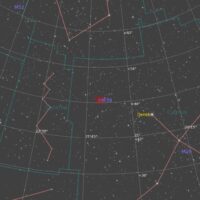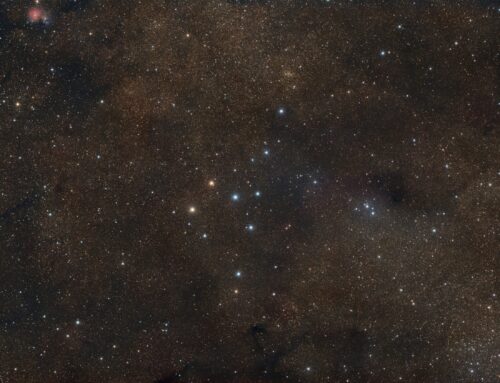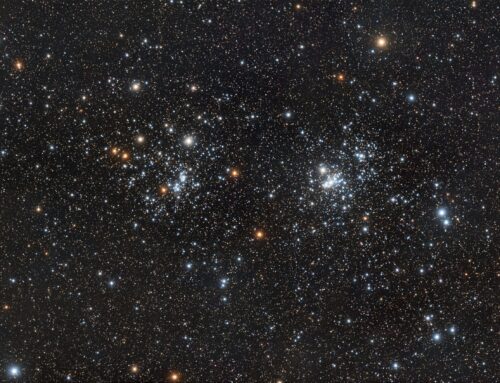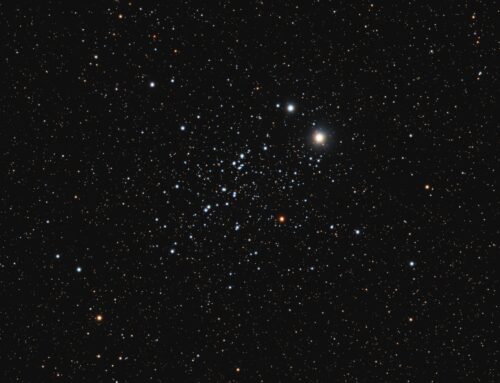M39
 Click image for full size version
Click image for full size version
August 13, 2022
M39 lies in Cygnus not far from the borders of Cassiopeia and Lacerta. It is a bright open cluster, perfect for imaging under a full Moon, which has about the same diameter as this cluster. While it is part of the Messier catalogue, it was discovered by Guillaume Le Gentil in 1749. It has a mass about 232 times the Sun’s, including at least six binaries among the brightest cluster members. It lies about a thousand light years from Earth.
Tekkies:
Acquisition, focusing, and control of Paramount MX mount with N.I.N.A., and TheSkyX. Focus with Optec DirectSync motors and controller. Equipment control with PrimaLuce Labs Eagle 4 Pro computer. All pre-processing and processing in PixInsight. Acquired from my SkyShed in Guelph. Very good transparency and average seeing. Acquired August 11, 2022, in a single full Moon night.
Sky-Watcher Esprit 150 f/7 refractor and QHY16200A camera with Optolong UV/IR filter
33x5m OSC = 2hr45m
The WeightedBatchPreProcessing script was used to perform calibration, cosmetic correction, weighting, registration, local normalization and integration of all frames.
DrizzleIntegration was applied to the OSC frames, and the result was aligned to the Luminance master with StarAlignment. This yielded aligned Lum and Colour masters.
DynamicBackgroundExtraction was applied to the luminance and OSC masters.
Colour
Colour Calibration: ColorCalibration was used to calibrate the OSC master.
Linear Noise Reduction: NoiseXterminator was used to reduce noise in the background areas with settings Amount=0.9 and Detail=0.15
Stretching: HistogramTransformation was applied to make a pleasing yet bright image.
Luminance
Linear Noise Reduction: NoiseXterminator was used to reduce noise in the background areas with settings Amount=0.9 and Detail=0.25
Stretching: HistogramTransformation was applied to make a pleasing yet bright image.
Combining Luminance and Color Images
Luminance addition: LRGBCombination was applied to replace the lightness of the RGB image with the Luminance master.
Additional Processing
Star Removal: StarNet v2 was used to remove stars.
Nonlinear Noise Reduction: NoiseXterminator was used to reduce noise in the background of the image with settings Amount=0.9 and Detail=0.25. CloneStamp
Star Restoration: Stars removed using StarNet2 above were added back into the image using straight addition in PixelMath. The Repaired HSV Separation script was used on a clone of the image to repair spurious colour in the centre of the very bright stars. The clone was blended with the original 75:25.
Final Steps: Background and star brightness, contrast and saturation were adjusted in several iterations using CurvesTransformation with masks as required. ICCProfileTransformation (sRGB IEC61966-2.1; Relative Colorimetric with black point compensation) was applied prior to saving as a jpg.







Leave A Comment